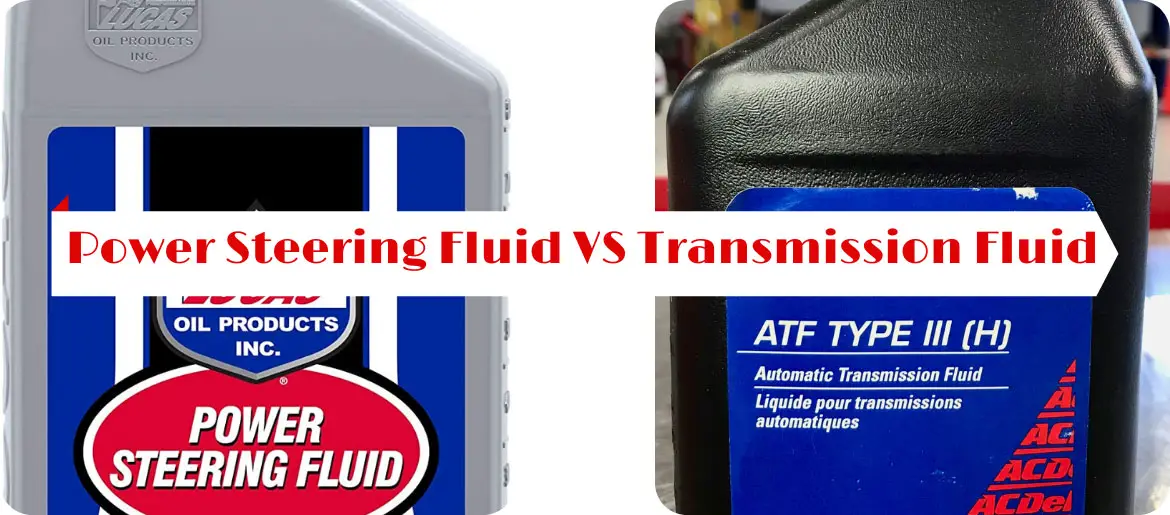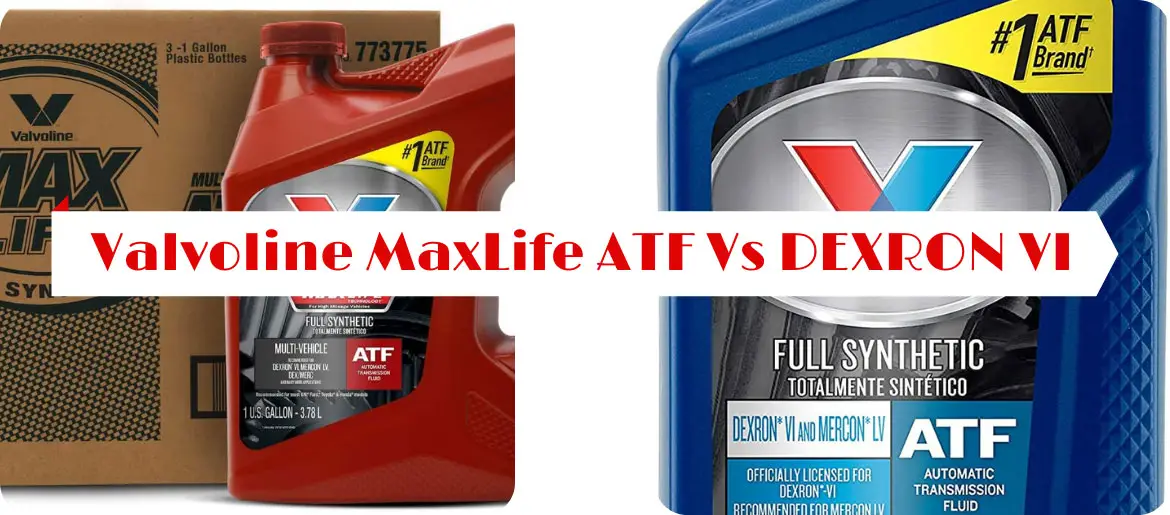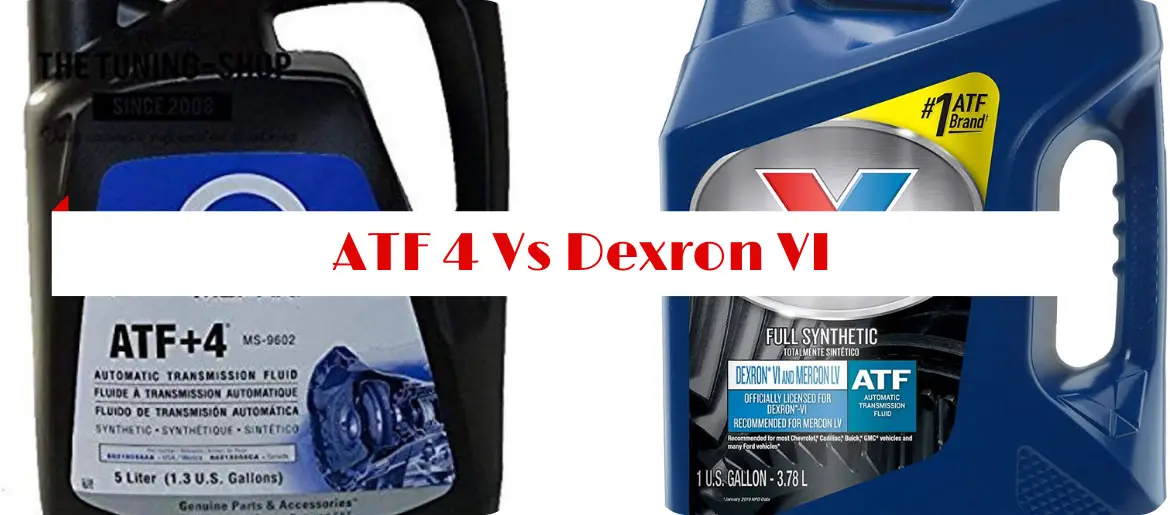Power Steering Fluid VS Transmission Fluid
Modern automobiles require different fluids for properly running the vehicle. Two of such essential liquids are power steering and transmission fluid.
Car owners tend to get confused between these because both of these are hydraulic fluids. And one of the main questions in the power steering fluid vs transmission fluid debate is whether they can be used interchangeably.
Even though they share some similarities, they are not the same.

If you don’t know how to differentiate them, you can end up damaging the car’s steering or transmission system.
Don’t worry. To help you, I’ve discussed the features that distinguish power steering oil from transmission oil in detail. Read on to find out everything you need to know for drawing a clear distinction between these fluids.
What Is Power Steering Fluid?
Vehicles that have a hydraulic steering system require a power steering liquid. This fluid creates a hydraulic link between the front wheels and the steering wheel. As a result, hydraulic power is transferred from the steering system to the front wheels of the car.
It’s stored inside the steering oil reservoir under the hood. This oil lubricates the components inside the steering system. Hence, you can turn the steering wheel smoothly without putting in much effort.
Moreover, this liquid works to keep the system clean. Other responsibilities of this oil include protecting the seals from wear. High-quality power steering oil can mend leaks on the seals too.
What Is Transmission Fluid?
Transmission fluids are used for lubricating the gears inside the transmission. This fluid supplies friction and pressure for shifting the gears smoothly.
Transmission liquid also acts as a coolant in both manual and automatic systems. It has a high heat-resistant feature. So, the temperature inside the transmission stays under control and the engine runs without wearing out.
Another important responsibility of this fluid is keeping the system clean. It contains detergents that can absorb metal fragments and dirt. Other than these, transmission fluid also lubricates the gears & valves and improves torque operation.
Power Steering Fluid VS Transmission Fluid
The main difference between power steering fluid and transmission is that power steering fluid is a type of hydraulic fluid that create links between hydraulic steering and front wheels to transfer the power. On the other hand, transmission fluid helps the vehicle’s transmission system runs smoothly and effectively.
1. Composition
Even though both are hydraulic fluids, there is a core difference between power steering fluid vs ATF. The formulation of power steering and transmission oil is completely different.
1.1. Power Steering Fluid
This fluid can be either synthetic or non-synthetic. Synthetic steering oils are non-oil-based liquids whereas non-synthetic oils are mineral-based.
Newer vehicles mostly use synthetic fluids. This is because synthetic steering fluid has better lubricity and dynamic viscosity.
Moreover, synthetic fluids provide improved steering response. So, you can enjoy a smooth driving experience.
1.2. Transmission Fluid
Transmission fluids are a complex formulation of various additives along with a petroleum or hydrocarbon base fluid. Typically it is created by mixing crude oil and different forms of hydrocarbon.
But newer synthetic transmission fluids are made by several chemical reactions. And these possess great features such as minimal oxidizing and thinning out even at high temperatures.
Depending on your car model, transmission oil is specified further into MERCON ATF or DEXRON ATF. DEXRON is for General Motors cars and MERCON is for FORD.
2. Area Of Operation
These fluids have different purposes and areas of operation inside the vehicle.
2.1. Power Steering Fluid
Power steering oil is used inside the steering system. The components inside the steering stay lubricated in this fluid.
The primary purpose of this liquid is to supply power to the steering wheels. It also reduces temperature buildup and creates hydraulic pressure to move the steering wheels.
Moreover, this fluid also helps the driver in controlling the front wheels of the vehicle.
2.2. Transmission Fluid
Transmission fluid is used in the automatic transmission system. Here, multiple gears shift automatically with engine demand. This system includes additional moving parts which are more delicate.
For proper operation, transmission fluid flows from the oil pump to the clutches. So, it’s used for power transfer as well as lubrication. Another important purpose of transmission liquid is keeping the transmission clean.
3. Color & Smell
ATF vs power steering fluid differences can clearly be distinguished by their color and smell.
3.1. Power Steering Fluid
This liquid is either clear, amber, or pink in color. And it generally smells of burnt marshmallows.
3.2. Transmission Fluid
Transmission oil is generally red in color. When it gets polluted it goes dark brown or black. You’ll get different sweet smells from different brands of transmission fluid.
4. Replacement
Over time and with prolonged use these fluids get polluted and lose their ability to perform optimally. So, checking and replacing them at required intervals is necessary to keep your car in its best shape.
4.1. Power Steering Fluid
Power steering liquid does not get polluted easily. So, you don’t have to replace it often. However, with time and use this fluid can get worn out. Moreover, if there is some other damage in your engine and it generates too much heat, this fluid can start to oxidize.
The old fluid does not provide as much power or lubricating effect. As a result, the entire steering system can get damaged. Hence, it’s recommended to change this fluid after 62,000 miles or five years of driving.
As you don’t have to replace it frequently, you should use high-quality steering oil. This will prolong your power steering system’s lifespan.
4.2. Transmission Fluid
Transmission fluid is generally operated at a higher temperature than steering fluid. So, it breaks down sooner than power steering oil.
In high temperatures, metal from the gears wears off and gets absorbed in the transmission fluid. With time the fluid gets so polluted that it can’t provide a cooling or lubricating effect anymore. As a result, the transmission gets overheated and can end up in engine failure.
Even though some manufacturers claim transmission fluid can last the lifetime of a car, you should check the fluid level every 30,000 to 100,000 miles.
5. Additives
One of the key differences between power steering and transmission fluid is that transmission fluid includes several additives and power steering fluid doesn’t.
5.1. Power Steering Fluid
This fluid does not include any additives like detergents or modifiers. So, it cannot trap dirt or debris coming from outside. So, the steering fluid gets contaminated. However, it can provide a lubricating effect to minimize friction.
5.2. Transmission Fluid
Different detergents are added to the transmission oil to increase its cleaning capability. The detergent can absorb metal contaminants and filter dirt from entering the fluid.
This fluid also has friction modifiers. These manage the excess temperature and pressure. As a result, the valves stay protected from damage.

FAQ
Is Power Steering Fluid The Same As Transmission Fluid?
No, the steering fluid is not the same as the transmission fluid. The first is a synthetic or mineral liquid and the latter is a hydrocarbon liquid. Also, transmission oil has detergents whereas steering oil doesn’t.
Can I Mix Power Steering Fluid With Transmission Fluid?
In some vehicles like Ford and GM, you can mix power steering and transmission fluid safely. But in Mercedez, BMW, and Honda you shouldn’t mix the fluids. Because mixing the fluids can end up damaging the gearbox seal and the pump.
What Are Substitutes Of Power Steering Fluid?
There are a few substitutes for power steering fluid that you can use in case of emergency. Commonly engine oil, transmission oil, axle oil, or other hydraulic fluids are used as substitutes for power steering fluid.
What Will Happen If I Use the Wrong Power Steering Fluid?
If you use the wrong power steering fluid for a prolonged period, the steering system can get damaged, the seals can break and even the brakes can fail.
How Often Should I Change My Power Steering Fluid?
This depends on your car’s model and also how frequently you use it. On average you should change it after five years or 62,000 miles.
Can You Use Transmission Fluid For Power Steering Fluid?
No, You can use transmission liquid for power steering fluid. But you shouldn’t. Because the detergents in the transmission fluid can cause brake slippage in the steering system.
What Will Happen If I Accidentally Put Transmission Fluid In Power Steering?
Both power steering and transmission fluid are hydraulic fluids. So, your vehicle will run even if you put transmission fluid in power steering. But you shouldn’t use transmission fluid in the power steering for a prolonged period.
Wrapping It Up
Changing power steering and transmission fluid is necessary for receiving optimum performance from your vehicle. For using the proper fluids in your vehicle, knowing the difference between power steering fluid vs transmission fluid is a must.
Steering and transmission fluids vary in many different aspects. While the former facilitates smooth steering operation, the latter keeps the transmission system lubricated and protected.






You left out Toyota, the only thing to be used in the power steering is ATF, Dextron II.